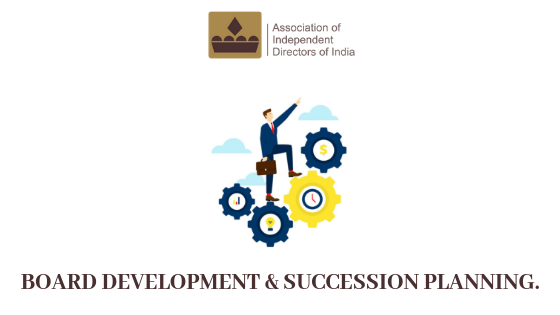Vibrant boardroom synergies cannot be legislated for, but can be built over time. It is imperative for all those who serve on the Board to enhance their effectiveness with each passing day by developing an effective framework of knowledge, skills and competencies that fit their organizational requirements and can serve as a basis for Board Appraisals.
Strong and effective boards possess traits of:
- Clear focus on Strategic Decision Making.
- Cooperation and Trust among the Board Members.
- Effective chairs to maintain effectiveness of meetings.
- Presenting Constructive Challenges to Board Members.
BOARD DEVELOPMENT CYCLE
Following a systems approach, the process of Board development passes through a cycle of the following 5 phases:
CREATION – Boards create the organization and therefore it is critical to devise a Skills Matrix containing the requisite set of skills required on the Board that would aid a holistic organizational development.
LAUNCH – The steps formulated in the creation stage are implemented and a proper search is initiated to onboard the right individuals with the required skill-sets, a list of Individuals is then created to choose from.
REFINEMENT – The most desirable candidates from the list of individuals are shortlisted to be onboarded in the Boardrooms.
STABILITY – Achieving the right balance in the boardroom through onboarding the right candidates with the requisite skill-sets to strengthen Boardroom Stability.
DISSOLUTION – Assuring proper disposal & replacement of the human capital chairing the Board as & when required. Following these stages, a Board completes its lifecycle, leaving behind its footprints on the organization as a whole.
ORIENTATION OF THE BOARD
The pivotal role played by the Board cannot be understated when seeking organizational success. This can be achieved only if apposite plans are formulated to ferry in the direction of betterment, which calls for appropriate orientation of the board and its members. Orientation of the entire board is essential due to the dynamic nature of the business environment. The purpose of orientation is:
- To familiarize new and old members with the organization and with the board’s responsibilities and modifications;
- To ensure that new members understand their fiduciary duties as Individual Board Members;
- To build a working relationship among Board Members that promote ongoing support and cooperation and enable them to come to an agreement on how they will carry out their duties and responsibilities.
Before designing a proper orientation wireframe, following elements must be given due consideration to customize the program accordingly:
- History of the organization
- Mission of the organization
- Strategic Priorities, Goals and Objectives
- Summary of the organization’s Programs/Services/Products
- Customer Base
- Organizational structure
- Board Structure, Executive Members, Committees, Staff Structure
- Individual Board Member’s Role
- Job descriptions, Expectations, and Legal liabilities
- Committees
- Board Development and Evaluation Process
- Budget Process
The aforementioned factors ensure the effectiveness of such programs for board members. However, a challenge that all organisations still contend with is that of finding the right successors to the existing Board of Directors.
DIRECTOR’S SUCCESSION PLANNING
Succession planning is a critical task, but doesn’t get much attention. In order to maintain continuity, an organization must strive hard to keep the successors ready in situations of crisis where a director is discharged off his/her duties. The phenomenon of succession planning stems out of certain situations like death, retirement or voluntary retirement of directors where it becomes important for someone equally competent to assume office and the associated responsibilities.
BENEFITS OF SUCCESSION PLANNING
Organizations which plan effectively for successors are the ones to enjoy the following benefits:
- Identification of the most-qualified future leaders.
- Maintaining Brand Identity.
- Efficacious long-term planning.
- Disaster-proofing the business.
BOARD SKILLS AND EVALUATION
The board succession planning process must be described through an unambiguous policy. A key element of the board succession “toolkit” is the board profile “matrix”. It is basically a document in which the skills, competencies and diversity needs of the board are mapped against the ones available through the board’s current composition. The matrix helps the board focus its search and write relevant “job descriptions” for the selection of new leaders.
DEVELOPMENT LADDER
When it comes to planning a successor internally from within the organisation, one of the most common tools that is used is the Development Ladder. It is a yardstick where each rung of the ladder specifies some goals or achievements to be attained so as to move to the next rung and once the prospect has climbed the top of the ladder, they would be eligible to take up the office and responsibilities of a Director.
Conclusion
Board’s Development cannot be considered without chalking out a comprehensive plan for finding future leaders. Similarly, without a Strong Board, successors cannot be planned coherently as the roles and competencies need to be communicated in clear terms. This sheds light on the fact that both go hand in hand and equally contribute to the path of development. All major decisions and policies trickle down from the Board to the rest of the organization, citing the importance of the Board’s consistent improvement. The prominence of Boards to be governed and be consistently stocked with the right set of Individuals is clearly evident in today’s mercurial business environment.

